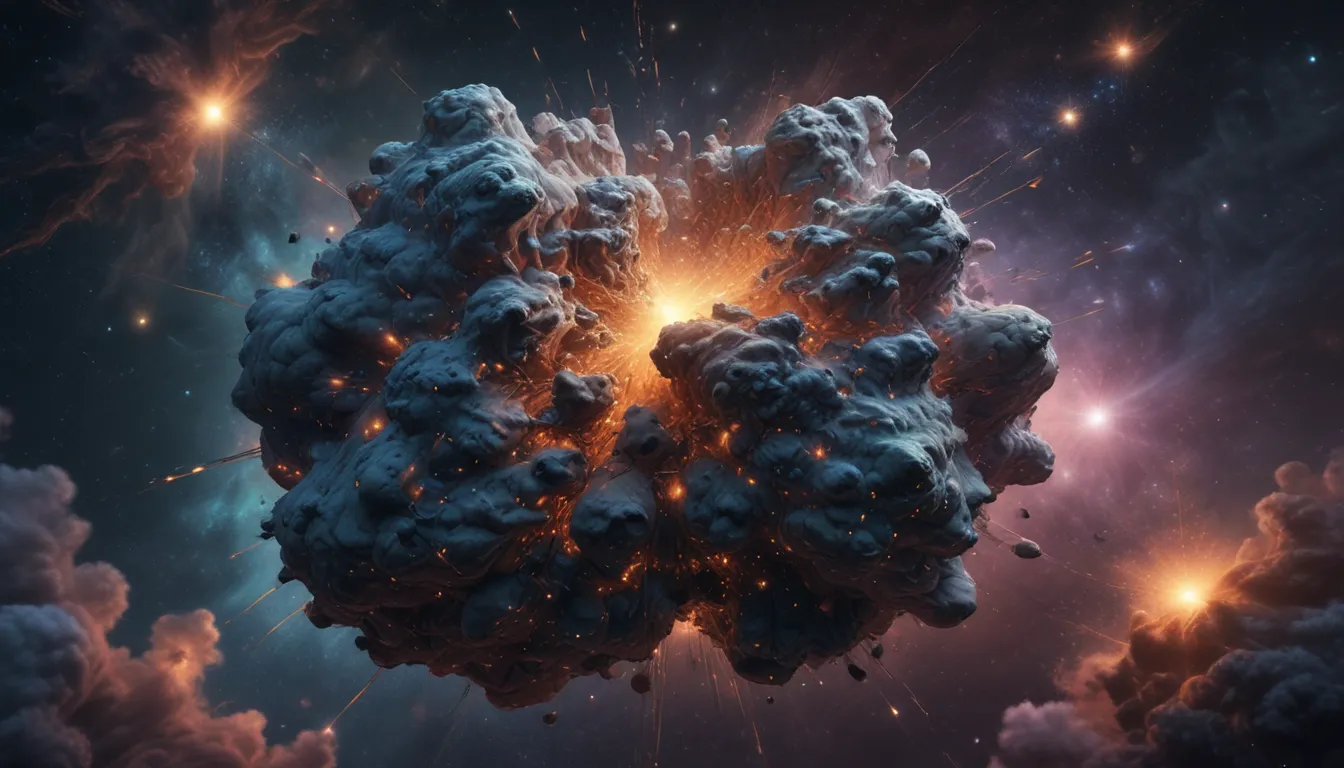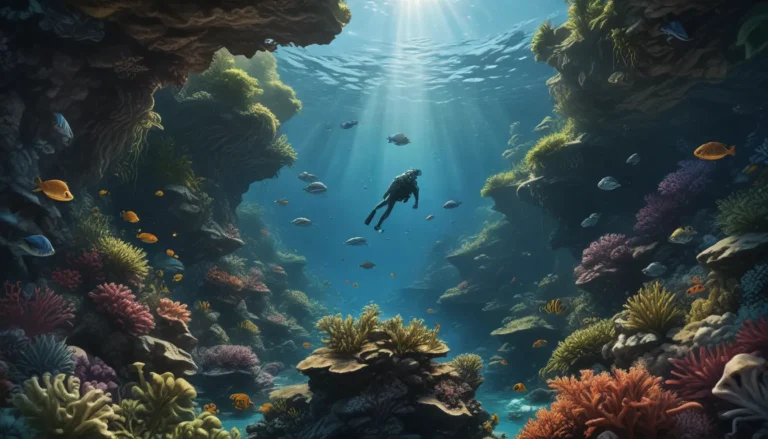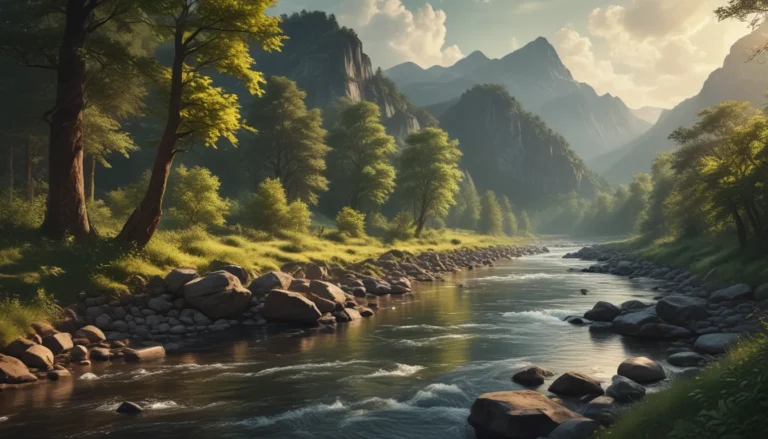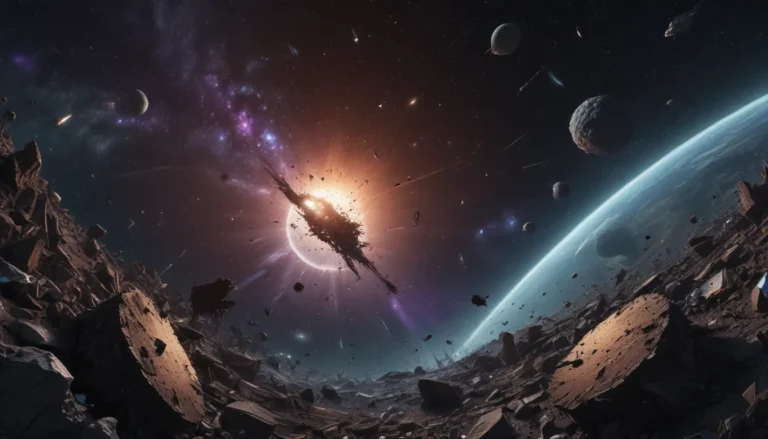The pictures we use in our articles might not show exactly what the words say. We choose these pictures to make you interested in reading more. The pictures work together with the words but don’t take their place. The words still tell you the important facts.
Star clusters have always captivated astronomers and space enthusiasts, showcasing the beauty and complexity of the universe. These clusters, composed of stars held together by gravity, create mesmerizing patterns in the night sky. However, the forces of the universe can disrupt these celestial wonders, unraveling them over time. In this article, we will delve into the enigmatic process of star cluster disruption and uncover 20 fascinating facts that shed light on this captivating phenomenon. From gravitational interactions to stellar collisions and stellar evolution, we will explore the many factors contributing to the unraveling of these stellar communities, shaping galaxies and triggering star formation. So, prepare for a journey through the intricate and mysterious world of star cluster disruption.
Understanding Star Cluster Disruption:
- Star Cluster Tidal Forces:
Galaxies exert gravitational forces on star clusters, causing them to experience tidal disruptions over time, reshaping their structure and altering their appearance. - Shape Alterations:
The gravitational forces from galaxies can elongate and deform star clusters, changing their original spherical shape and creating unique patterns in the night sky. - Role of Dynamical Friction:
Dynamical friction, a process in which surrounding matter slows down and disrupts the movement of star clusters, can contribute to their disruption, affecting their stability. - Stellar Interactions:
Close encounters between stars within a cluster can lead to disruptions, redistributing mass and influencing the overall dynamics of the cluster. - Impact of Giant Molecular Clouds:
Collisions between star clusters and giant molecular clouds can trigger disruptions, scattering stars and altering their trajectories within the cluster. - Formation of Tidal Tails:
Disrupted star clusters often give rise to tidal tails, elongated streams of stars trailing behind the cluster, showcasing the aftermath of disruption. - Creation of New Open Clusters:
Following disruptions, some stars disperse and form new open clusters within the galaxy, contributing to the diverse stellar populations. - Contribution to Galaxy Evolution:
Star cluster disruptions play a vital role in rearranging stars within galaxies, influencing their evolution and overall structure over time.
Cosmic Interactions and Outcomes:
- Cluster Mergers:
During the disruption process, some star clusters can merge with neighboring clusters, forming larger and more massive clusters with distinct characteristics. - Galactic Halo Population:
Disrupted star clusters can become part of a galaxy's halo, a vast region surrounding the galaxy's main body, where sparse stellar populations reside. - Energy Release:
The disruptions generate significant amounts of energy, accelerating particles and creating cosmic rays, influencing the cosmic environment. - Star Formation Triggers:
Disruptions of star clusters can initiate new star formation within galaxies, enriching their stellar populations and contributing to cosmic diversity.
Advanced Studies and Observations:
- Galactic Collisions:
Collisions between galaxies can disrupt star clusters, influencing their structure and leading to dynamic interactions within the galactic system. - Intergalactic Stellar Population:
Dispersed stars from disrupted clusters can become part of the intergalactic space, contributing to the diffuse population of stars beyond galaxies. - Dark Matter Influence:
Dark matter, a significant component of the universe's mass, can affect the disruption of star clusters through its gravitational effects, shaping their fate. - Observing Disruptions:
Astronomers can detect and study star cluster disruptions by analyzing unique light signatures emitted by dispersed stars and tidal tails, unveiling cosmic processes.
Insights into Galactic Dynamics:
- Educational Value:
Studying star cluster disruptions provides valuable insights into the complex dynamics and gravitational interactions occurring within galaxies, unraveling the mysteries. - Cluster Variations:
Different types of star clusters undergo distinct disruption processes based on their characteristics and locations within galaxies, showcasing cosmic diversity. - Chemical Enrichment:
Disrupted star clusters release heavy elements, enriching the galactic chemical composition and influencing the evolution of galaxies over time. - Simulation Advancements:
Advanced computer simulations help scientists understand the complexities of star cluster disruption, providing a deeper understanding of cosmic phenomena.
As we explore the intricate facts about star cluster disruption, we gain a deeper understanding of the ever-changing cosmic landscape. These disruptions play a vital role in shaping galaxies, triggering star formation, and contributing to the cosmic balance, showcasing the dynamic interactions within the universe.
Conclusion:
In conclusion, star cluster disruption remains a captivating phenomenon that unveils the mysteries of the universe. The enigmatic facts surrounding this process highlight the intricate workings of cosmic systems, offering valuable insights into galactic dynamics and stellar interactions. By studying star cluster disruption, scientists can unravel the evolution of galaxies, the formation of new stars, and the cosmic transformations that shape our universe.
These 20 enigmatic facts about star cluster disruption serve as a reminder of the complexity and vastness of our cosmic surroundings, encouraging us to explore and learn more about the wonders of the cosmos.
FAQs:
- Causes of Disruption:
Star cluster disruption is primarily caused by gravitational forces exerted by galaxies, with tidal forces playing a significant role in tearing apart clusters over time. - Tidal Tails Explanation:
Tidal tails are streams of stars stretched out due to gravitational interactions between disrupted star clusters and host galaxies, forming extended trails of stars. - Cluster Fate Variability:
Not all star clusters will undergo disruption, as their fate depends on factors such as distance from the galactic center, size, and strength of tidal forces. - Cluster Reformation Possibility:
In some cases, remnants of disrupted star clusters can reform and create new clusters, but the process is intricate and relies on various conditions. - Role in Galaxy Evolution:
Studying star cluster disruption offers insights into galaxy dynamics and evolution, shedding light on the formation and transformation of galactic structures.
Unveiling the mysteries of star cluster disruption adds a unique perspective to our understanding of the cosmos. Each discovery leads to a deeper appreciation of the intricate processes that shape our universe, inviting us to marvel at the wonders that fill our night sky. Explore the vast cosmic tapestry, expand your knowledge, and embark on a journey through the captivating realm of astronomy, where each fact uncovered enriches our understanding of the cosmic dance.
Trust in Quality Content:
Our dedication to providing trustworthy and engaging content drives our mission to deliver accurate and credible information. Each fact shared on our platform is contributed by real users, ensuring a diverse range of insights and knowledge. With meticulous editorial reviews, we guarantee the highest standards of authenticity and reliability in every detail shared. Explore, learn, and trust in our commitment to quality as we unravel the mysteries of the universe together.






